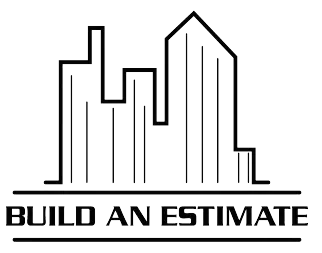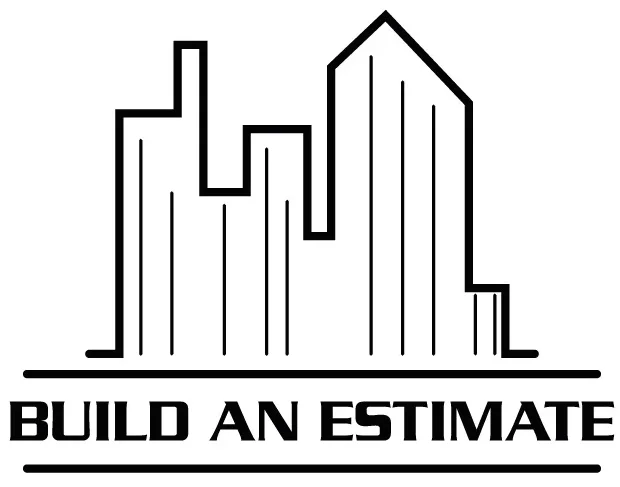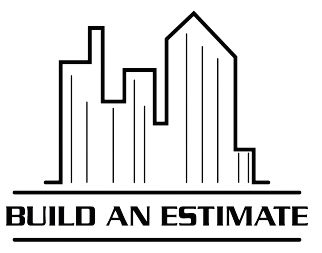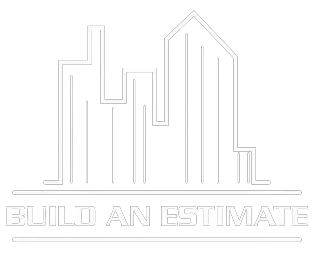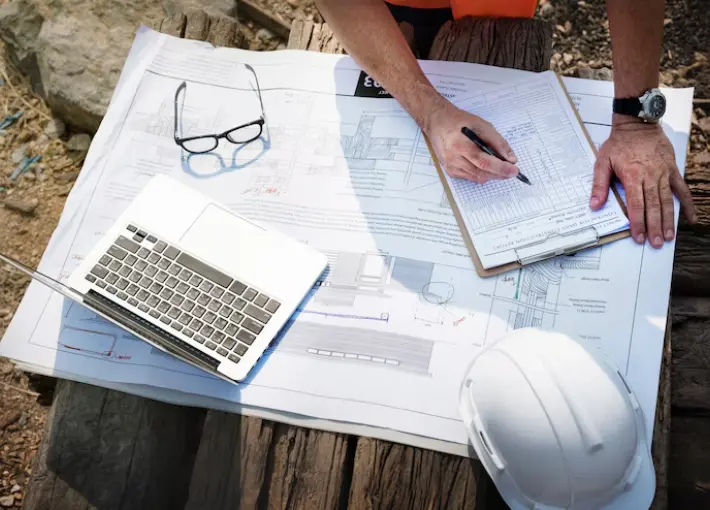- HOME
- SERVICES
- OUR TRADES
- SAMPLES
- Build An Estimate – Accurate Cost Estimating
- CONTACT
- Home
- Services
- Our Trades
- Samples
- Pricing
- Blog
- About Us
- Contact
- HOME
- SERVICES
- OUR TRADES
- SAMPLES
- Build An Estimate – Accurate Cost Estimating
- CONTACT
- Home
- Services
- Our Trades
- Samples
- Pricing
- Blog
- About Us
- Contact

Key Factors in Pre-Construction Cost Estimates for Building a New Home
October 11, 2024
Defining Construction Material Needs – A Practical Approach
October 15, 2024Why Is Estimation Important In Construction
Are you finding it difficult to control the costs associated with the construction project or why is estimation important In construction? Wondering whether your budget will be enough to cover the complete build? In construction, estimating plays an important part by offering a clear view of project expenditures before starting work.
Accurate estimates help you plan proactively, manage costs, and stay alert to potential financial problems. When a proper estimate isn’t available, projects tend to exceed their budgets, leading to delays and stress. Your project’s success depends on the importance of cost estimation.
This article will convey the importance and the answer of the question: why is estimation important In construction & this precise construction estimates for effective project planning and decisions. Keep reading to learn more.

Understanding Construction Estimating
Construction estimating refers to forecasting the overall financial cost of a construction project. It is important in both planning and execution because it delivers a clear view of financials. Accurate estimates include everything from materials to labor and overhead expenses, reducing the likelihood of overspending and lag times.
The key steps in construction estimating include the following:
- Project Assessment: Analyze project plans and specifications to clarify the scope.
- Quantity Takeoff: Determine and compile all materials and labor requirements.
- Costing: Set prices for all items by market prices and supplier quotes.
- Budgeting: Put together a detailed budget by totaling all expenses, including contingency funds.
An effectively organized estimate allows stakeholders to make educated decisions about project funds management and ensure that the project remains on time.
Importance of Accurate Construction Estimating
Completed projects require that construction estimating be precise. Precise estimates form a trustworthy basis for planning, budgeting, and carrying out tasks. Here’s why accuracy matters:

1. Prevents Budget Overruns
Estimating with precision guarantees you know the financial commitments needed for a project, from materials to labor. It helps avoid overspending and keeps your project within the budget you have allocated. If estimates are wrong, unforeseen expenses can occur, creating financial problems.
2. Helps Avoid Delays
By using accurate estimates, you can make resource allocation efficient and organize timelines correctly. Incorrect estimates usually lead to deficits of materials or planning issues, resulting in project postponement and likely the failure to meet deadlines.
3. Improves Decision-Making
Correct estimates of costs give a clear view of finances, facilitating well-informed decisions regarding scope, materials, and timelines. Implementing this level of transparency allows for superior project planning and execution.
4. Minimizes Financial Risk
Construction projects are pretty pricey, and mistakes in estimation can incur financial losses. Getting estimating right lowers the chance of surprise expenses and keeps the project financially viable.
5. Avoids Legal Issues
When the expenditures exceed the original forecast, disagreements might develop between contractors and clients, occasionally resulting in litigation. An accurate estimate assists in setting explicit expectations and prevents misunderstandings that might lead to legal problems.
Accurate construction estimating helps guarantee project success by keeping projects on schedule and budget.
Types of Construction Estimates
Effective project management requires knowledge of the multiple types of construction estimates. Each estimate contributes to a different objective at different project moments.
Preliminary Estimate
A preliminary estimate is a rough calculation used at the start of project planning. It supports project feasibility evaluation by delivering a rough estimate of costs. This estimate, even if it is short on details, is important for creating first impressions and navigating decisions.
Budget Estimate
The budget estimate represents a detailed analysis intended to distribute funds and to set budget boundaries. It assists when the project becomes more concrete, identifying how much money is necessary for stakeholders. The estimate is tightly related to accessing financing and verifying that sufficient funds are in place for the project.
Definitive Estimate
The definitive estimate is the most accurate type. It is prepared after all project plans are complete and design choices are confirmed. It furnishes a detailed account of labor, materials, and other expense costs. Having this estimate is important for final bidding and project implementation, as it ensures that all collaborators have a detailed understanding of the monetary requirements.
Awareness of when and why to apply every type of estimate enables you to improve the effectiveness of project planning and cost control.
Key Steps in the Estimating Process

Successful construction projects depend heavily on correct cost estimation. We will explore a detailed breakdown of the estimating process, showing the contributions that each step makes to trustworthy project costing.
Reviewing Bid Packages
The first thing to do is review bid packages. Estimators carefully scrutinize contract documents, drawings, and specifications to fully understand the project’s scope and requirements. This review verifies that all features of the project are under review, reducing the chance of not recognizing essential details.
Conducting Site Visits
Estimators visit the site next. Physical surveys permit them to confirm site attributes, including access, topography, and current architectural elements. This action helps to reveal potential challenges that might go unnoticed in the drawings, which leads to improved estimate accuracy.
Performing material takeoffs
Estimators do material takeoffs after site visits. This process includes estimating the materials necessary for the project, which incorporates concrete, steel, and fixtures. Precise takeoffs play a key role in estimating costs and guaranteeing that the needed materials are available at the right moment.
Evaluating Labor and Overhead Costs
Estimators evaluate labor costs alongside overhead costs at that point. This involves calculating labor rates by skill levels and estimating the equipment usage necessary for the project. To guarantee a complete budget, this assessment includes overhead costs, which include utilities and administrative expenditures.
Accounting for Profit and Contingencies
Finally, estimators take into account profit margins and contingencies. They include a profit percentage to keep the contractor’s project feasible. Contingencies are also inserted to account for unforeseen circumstances or changes in construction. This secures the project against surprising costs and ensures it remains on budget.
Best Practices for Improving Estimating Accuracy
Most people asked why is estimation important In construction? So achieving greater accuracy in construction estimates is fundamental for project success. Here are some practical suggestions for firms to improve their estimating processes.
Employing Established Templates
Using well-established templates is a wonderful method to ensure project uniformity and dependability. The templates supply a formatted structure for estimates, which facilitates the incorporation of all important details. Using a standardized technique ensures estimators do not overlook significant parts and keep their mathematics consistent.
Reviewing Past Projects
Learning from historical data is of great value. By analyzing historical projects, companies can find recurring issues, expenses, and hurdles they have dealt with. Examining previous successful projects can reveal what strategies succeeded and what failed, enabling estimators to improve future estimates with real-world knowledge.
Evaluating Labor and Material Expenses
Regular updates of labor and material costs are important for obtaining correct estimates. Changes in the construction market frequently affect labor and material costs. Organizations can prevent budget overruns by ensuring their estimates reflect real costs as long as they stay informed about current market rates.
Implementing Construction Estimating Software
Current construction estimating tools can markedly boost accuracy and efficiency. Using technology, estimators are better able to produce precise estimates quicker, minimizing the chances for human error and enhancing overall project planning.
Following these best practices will allow companies to develop more precise estimates, resulting in improved project results and greater client happiness.
Role of Technology in Construction Estimating
The present technology is changing the construction estimating method, making it more efficient and accurate. Here’s a look at how different tools and innovations are redefining this important part of construction projects.
1. Cloud-Based Software: Thanks to these platforms, teams can access project estimates anytime and from anywhere. This availability supports teamwork among stakeholders, ensuring that everyone is in agreement. To reduce delays, teams can rapidly update their estimates and share them with clients or contractors.
2. Artificial Intelligence (AI): AI tools analyze large volumes of data to predict project costs with great precision. They can highlight trends emerging from past projects and recommend cost-saving strategies. Through the automation of repeated tasks, AI provides the freedom for estimators to focus on the advanced areas of the project, improving total productivity.
3. Data Analytics: Advanced data analytics allows estimators to make informed choices using historical data and market trends. The obtained insight improves budgeting and resource allocation accuracy, thereby lowering the chances of overruns.
4. Automation: Automated estimating processes speed calculations and decrease human error. The software can rapidly produce estimates from input data, ensuring consistent and precise calculations.
Challenges in Construction Estimating
Estimating in construction often suffers from several difficulties that can produce inaccuracies, which in turn affect project timelines and budgets. Addressing and identifying these difficulties is vital for boosting the reliability of estimates.
Common Estimation Errors
1. Underestimating Labor Costs: Underestimating the effort involved or the skill set essential can markedly increase the costs of a project.
2. Material Cost Errors: Excluding price variations or opting for unsuitable materials can result in going over budget.
3. Inaccurate Timelines: Too much optimism about project schedules might cause delays, which would increase equipment costs.
External Factors Impacting Estimates
1. Market Price Fluctuations: The constant variation in material prices, including steel, lumber, and concrete, makes it hard to secure precise estimates.
2. Regulatory Changes: Developing new building codes or regulations might incur unforeseen costs.
3. Environmental Conditions: Local weather or site problems may obstruct work, leading to delays and enhanced costs.
By recognizing these factors, you can raise the precision of your construction estimates and avoid significant surprises.
Conclusion
Accurate estimates are key to achieving success in construction. By enhancing processes and implementing technology, we can manage costs, cut down risks, and build confidence with our clients. Emphasizing efficiency facilitates workflow efficiency and enables swifter decision-making. Businesses that prioritize better estimating are more competitive and better suited for advancement. Buildanestimate delivers expert assistance that keeps your projects moving forward with dependable and accurate estimates.
